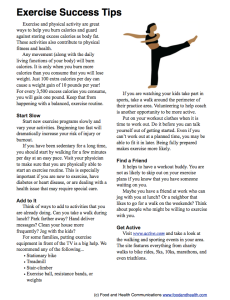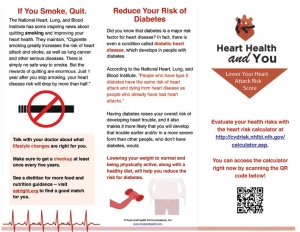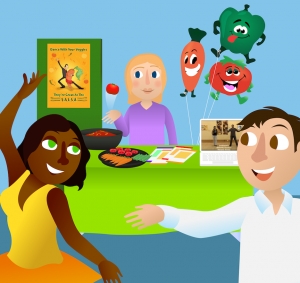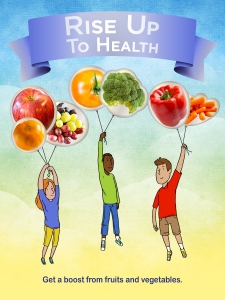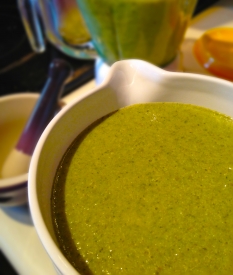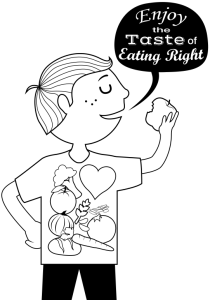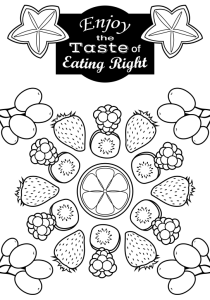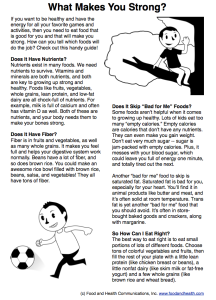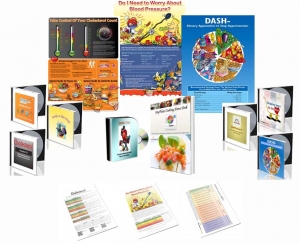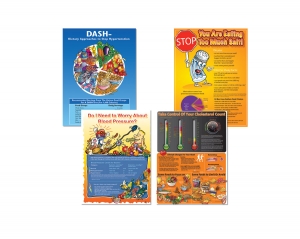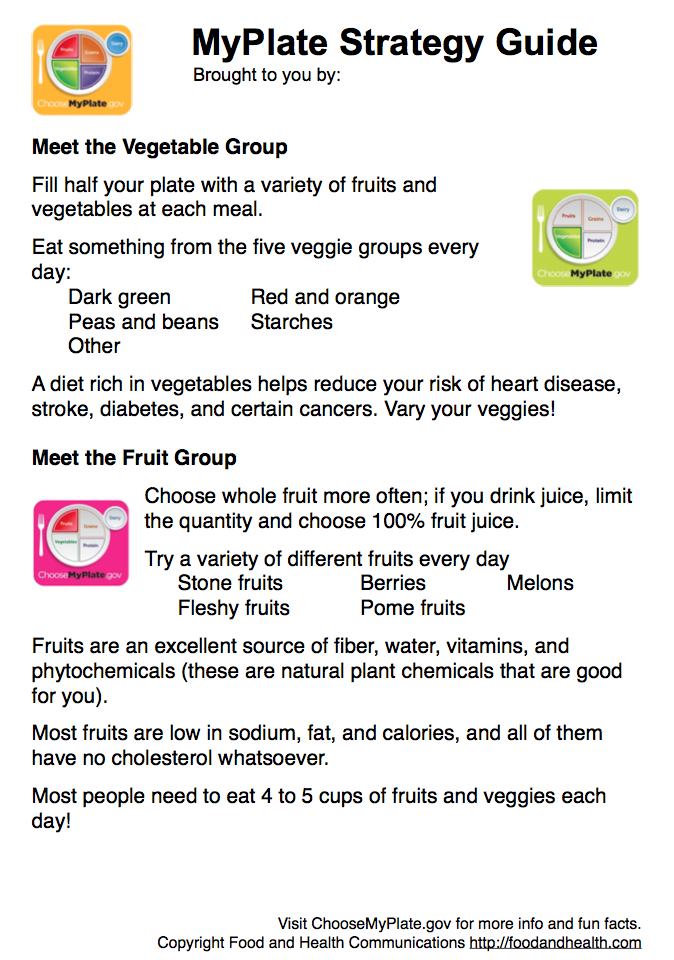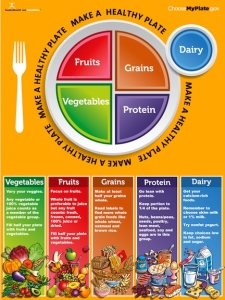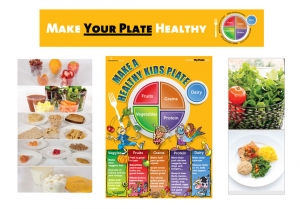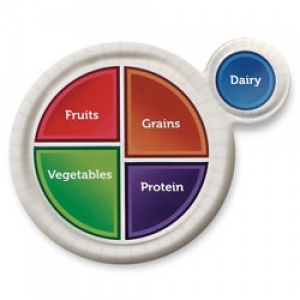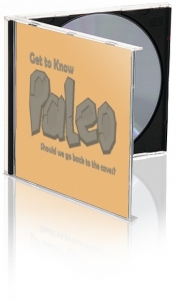Nutrition Month is coming right up — are you ready to address this year’s theme? According to the Academy of Nutrition and Dietetics, the 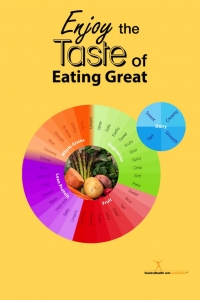 Nutrition Month theme for 2014 is “Enjoy the Taste of Eating Right.” This theme offers a great way to introduce people to healthful — and delicious — new foods. To make this task easier for you, we’ve created a colorful new poster that addresses the theme of Nutrition Month 2014.
Nutrition Month theme for 2014 is “Enjoy the Taste of Eating Right.” This theme offers a great way to introduce people to healthful — and delicious — new foods. To make this task easier for you, we’ve created a colorful new poster that addresses the theme of Nutrition Month 2014.
This nutrition poster is a great resource for Nutrition Month and helps its viewers realize the wide range of flavors and textures that abound in healthful food. With great photography and creative descriptions, this health poster is a wonderful way to brighten up any office or classroom.
Want to take it a step further? Try some of these great activity ideas to go with your new poster. Whether you’re looking for class discussions or games, we’ve got a little something for everyone…
Activity #1: Wheel of Flavor
Start by punching a hole in the middle of two index cards. Place a paper arrow over each hole and affix it to the card with a brad. Give the arrows a flick to make sure that they spin smoothly. Tape one index card over the photo of the vegetables in the center of the large wheel, and tape the second card in the center of the smaller “Dairy” wheel. Now you have transformed your poster into a set of game wheels.
Before your session, set up the poster in an easily visible area of the room.
Once your audience has arrived, divide the participants into 2 groups. The groups can then take turns sending members up to pick a wheel and spin it. The volunteer must then name a healthful food in that food group that could be described by the adjective the arrow landed on. For example, if the arrow lands on the word “tart” in the dairy category, the volunteer could answer “plain nonfat yogurt.” Once a food is correctly named, the volunteer earns a point for his/her group, and the other group gets a chance to send up a representative.
If a person guesses a food that is not part of the food group, does not posses the flavor chosen, or which is not healthful, the opposing group gets a chance to guess a food that fits better, thus picking up the point. At the end of the game, tally up the points and declare a winner.
Activity #2: Flavor and Texture, Together at Last
Slice up a few apples and distribute pieces to your participants. Brainstorm words that describe the flavor and texture of the apples. Are they sweet? Crispy? Crunchy? See how many different words your group can come up with.
For a fun variation, slice up a few different types of apples. Have participants compare the flavors and textures. How are they the same? How are they different?
Activity #3: Condiments and Flavor Boosts
Lay out a buffet of a few plain foods like baked potatoes, grilled chicken breasts (no skin), and/or brown rice. Arrange a second buffet nearby, this one full of flavorful toppings like salsas and fresh herbs.
Have participants taste the plain foods first, describing the textures and flavors. Then let them loose on the toppings bar. How do the flavors and textures change? How can healthful condiments make foods more palatable?
As far as toppings go, consider including any of the following: fresh or jarred salsas, roasted vegetable purees, fresh herbs, dried herbs, different kinds of pepper (white, cayenne, black), hot sauce, lemon slices, etc.
Free Infographic
If you’d like to help your clients enjoy the taste of eating right today, then download this great flavor wheel infographic. It’s perfect for email blasts, tweets, handouts, and more!
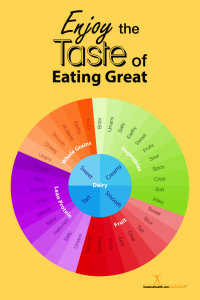
Is there anything else you need for Nutrition Month? Some of the most popular Nutrition Month materials include…

Nutrition Poster

Cooking Demonstration Display Kit
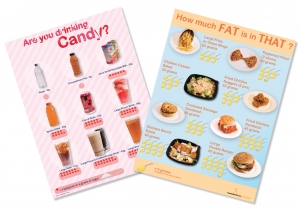
What’s in Your Food? Poster Set

Nutrition Bootcamp Presentation



 Nutrition Month theme for 2014 is “Enjoy the Taste of Eating Right.” This theme offers a great way to introduce people to healthful — and delicious — new foods. To make this task easier for you, we’ve created a colorful new poster that addresses the theme of Nutrition Month 2014.
Nutrition Month theme for 2014 is “Enjoy the Taste of Eating Right.” This theme offers a great way to introduce people to healthful — and delicious — new foods. To make this task easier for you, we’ve created a colorful new poster that addresses the theme of Nutrition Month 2014.




